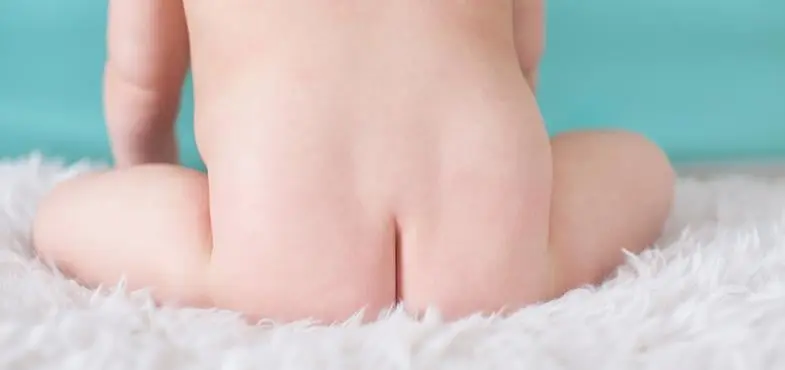Redness and soreness caused by a diaper or nappy rash can happen fast. So, it’s comforting to know that there are ways to help treat and protect your baby. Here you will find all the information you need about nappy rash, from causes and symptoms through to treatment, protection and care.
What is Nappy Rash?
Nappy rash is one of the most common skin conditions – it’s also the most common skin problem in early childhood. You won’t be alone if your baby develops nappy rash, most children aged 0-3 years old develop nappy rash in some way and thus require treatment. Although it’s usually seen in babies from 6-8 months, it can also happen much earlier.
Causes of Nappy Rash
The area under a nappy is a difficult environment for baby skin. A combination of excess moisture, warmth, urine and faeces and friction can all lead to nappy rash.
The nappy creates an enclosed area around the bottom - this increases warmth, moisture and encourages the growth of microorganisms that can cause infection.
Chafing, due either to skin rubbing against the nappy, or from skin folds, can damage and irritate the skin.
Ongoing contact of the skin with urine, faeces or both, can lead to a formation of ammonia which can irritate baby’s skin.
There is also a common link made between nappy rash and teething, as well as the transition to solid foods.
Symptoms - Identifying Nappy Rash
Nappy rash can develop quickly and appears in the area under the nappy. There are common symptoms, though the rash itself can look different from baby to baby.
Have a look under your baby’s nappy. If nappy rash exists, you’ll see some or all of these symptoms:
Pinkness or redness over a small or large area of the baby’s bottom, or wherever the nappy touches their skin.
Dry, raised bumps (called papules)
Fluid-filled raised bumps (called pustules)
Dryness, peeling or scaling of the skin
Swelling
The affected area may be warm to touch
Most nappy rashes are mild and can be treated with a simple skincare routine. Your baby will usually feel no pain or discomfort. However, in severe cases and when infection is involved, the condition can be distressing and requires medical treatment.
We recommend you contact your doctor or health care provider in these situations:
Your baby cries in pain when the nappy rash is touched.
Your baby has a fever.
The nappy rash blisters or starts to bleed.
The rash spreads to other parts of the baby’s body, like their arms or face.
The rash does not improve after a week, or stops then reoccurs.
Nappy Rash Treatment



Step 01 Clean baby’s skin
Firstly, make sure you change wet or soiled nappies straight away. Gently but thoroughly clean baby’s skin with mild and gentle baby wipes from JOHNSON’S®, or if you prefer, cotton wool and water.
Step 02 Allow nappy area to dry
After you’ve finished cleaning baby’s bottom, pat it dry, or allow your baby to go nappy-free for a little while to air-dry.
Step 03 Apply nappy cream
When baby’s bottom is dry, apply JOHNSON’S® Baby Nappy Cream, to help protect your baby’s skin from contact with urine and faeces. It can also help protect against friction from the nappy on their delicate skin.
